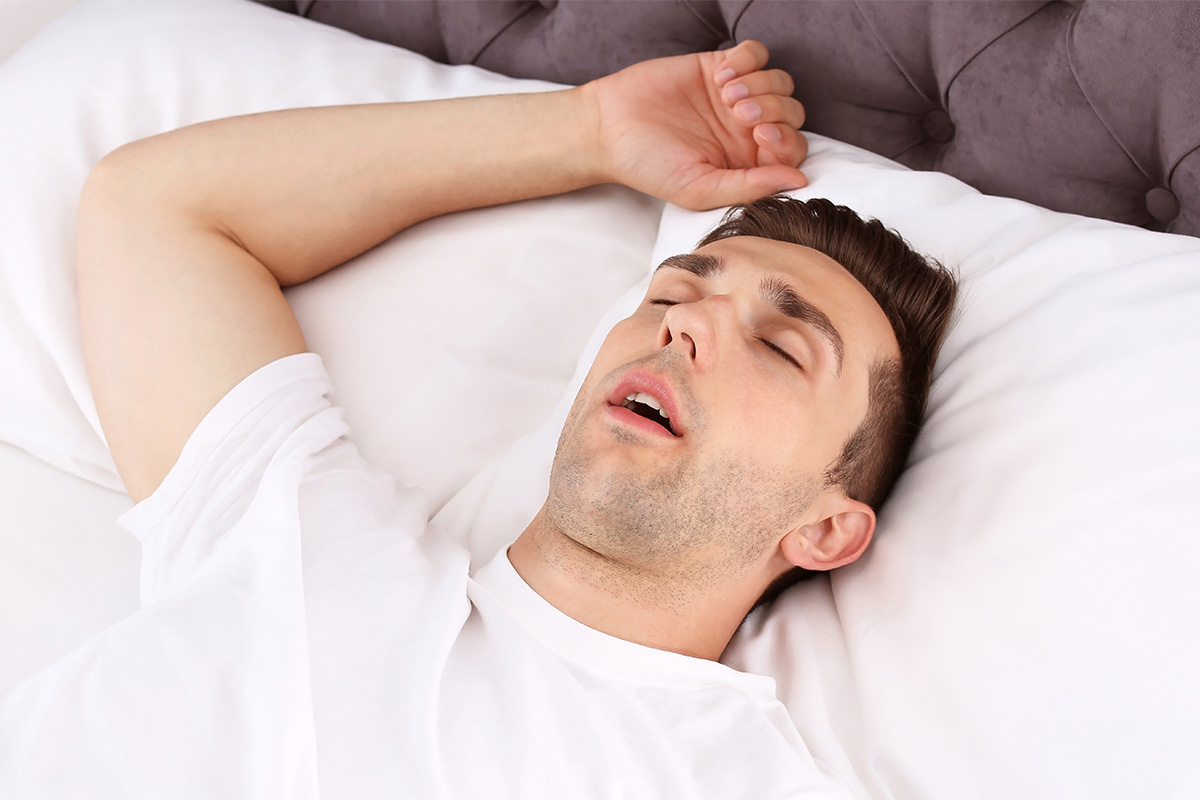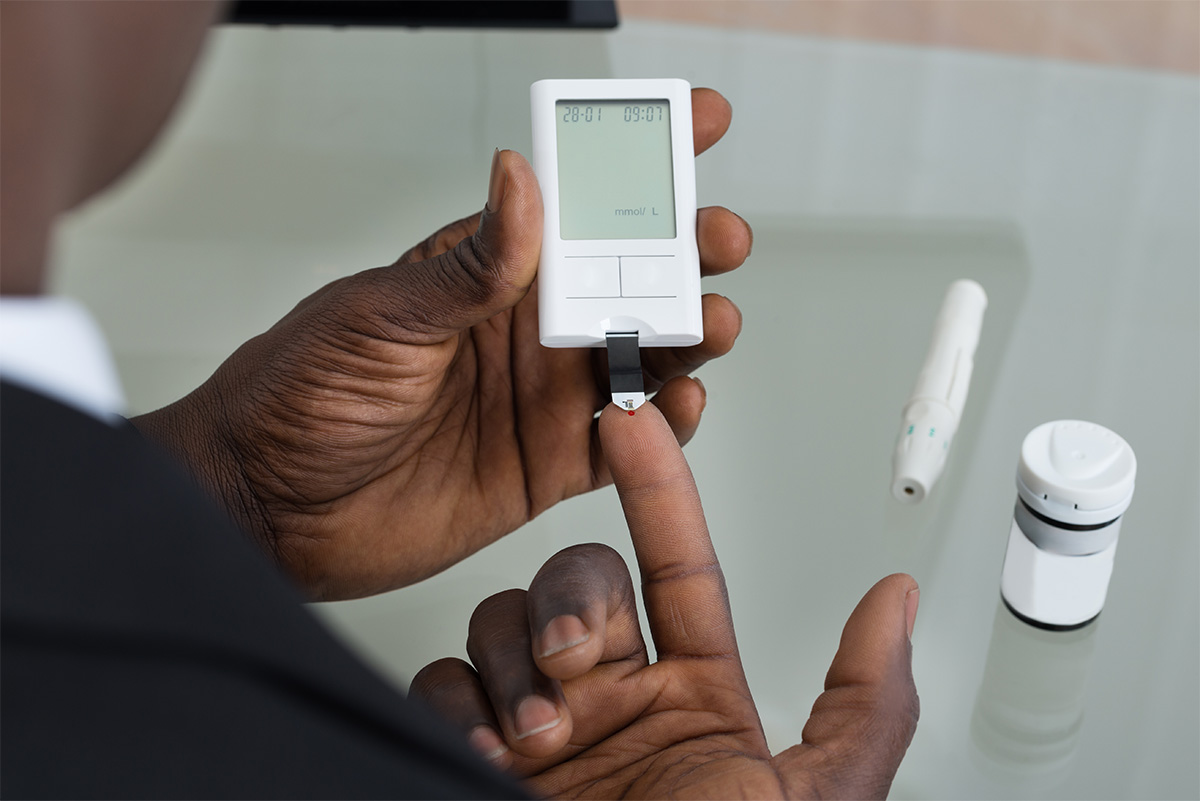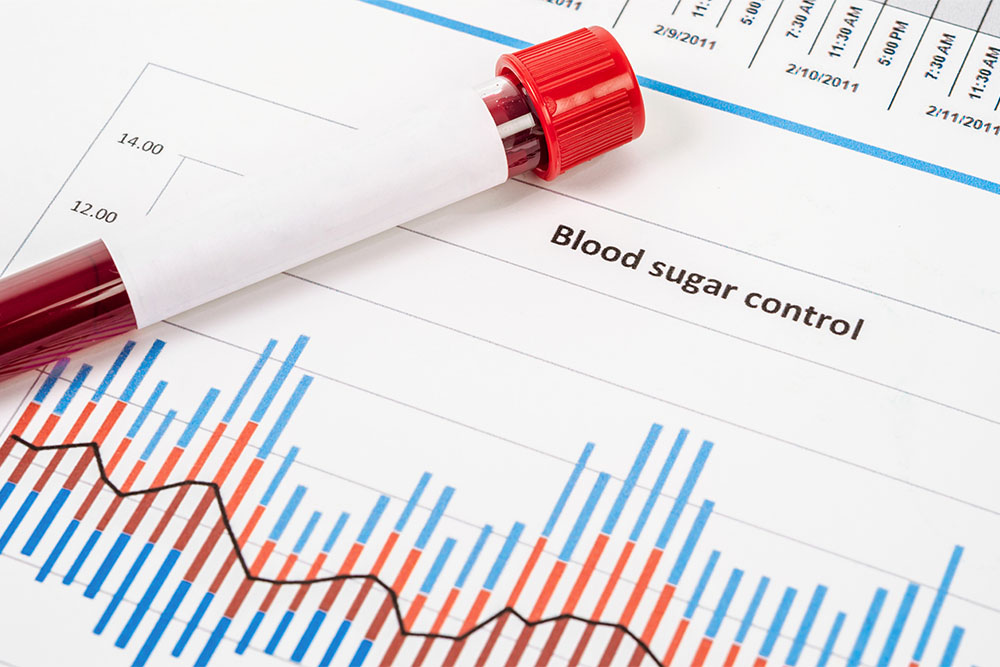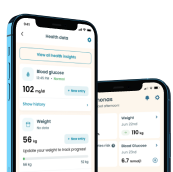The Relationship Between Sleep Apnea and Diabetes
Getting a good night's sleep is crucial for maintaining general health, just like eating a balanced diet, drinking plenty of water, and exercising frequently.

Getting a good night's sleep is crucial for maintaining general health, just like eating a balanced diet, drinking plenty of water, and exercising frequently.
But if you have diabetes, getting insufficient sleep has a negative impact on all aspects of your life, including how much and what you eat, how you choose to eat, how you react to insulin, and how you feel mentally.
According to clinical studies, as many as 48% of individuals with type 2 diabetes also have been diagnosed with sleep apnea. Even more startling is that researchers believe that 86% of obese type 2 diabetes patients suffer from sleep apnea.
So, let’s unwrap this relationship between diabetes and sleep apnea and how it can impact diabetes management.
What Is Sleep Apnea?

Sleep apnea is when your breathing stops and starts while you sleep. The most prevalent type of sleep apnea is obstructive sleep apnea (OSA). Sleep apnea leaves the body deprived of oxygen which, in turn, disrupts heart function, blood pressure, and metabolism. These effects can be severe and make it crucial for people with diabetes to understand and treat sleep apnea when it occurs.
Sleep apnea is a breathing disorder, not a sleep disorder, that can be brought on by bad sleep habits or various physical or mental conditions.
What are other signs of sleep apnea, you might ask? Here are some of the main signs of sleep apnea:
- Loud snoring
- Gaps in breathing
- Choking or gasping for air
- Daytime sleepiness
- Waking up a lot
The lack of oxygen caused by sleep apnea interferes with the heart’s normal rhythm, blood pressure, and metabolism. Due to the potential severity of these effects, it is critical for people, especially those with diabetes, to comprehend and effectively manage sleep apnea when it manifests.
For now, let’s look at diabetes and its prevalence worldwide.
Diabetes Mellitus Prevalence

Diabetes is a long-term chronic illness that affects how your body converts food into energy.
Most of the food you consume is converted into sugar (glucose), which is then released into your bloodstream. Your pancreas releases insulin when your blood sugar levels rise. Blood sugar is allowed into your body’s cells by insulin so that it can be used as energy.
Diabetes is a disease that affects 537 million people worldwide, or 1 in every 10 people, according to 2021 data. But the total number of people with diabetes is expected to rise dramatically, reaching 643 million by 2030 and 783 million by 2045.
Christine Zalnieraite, Head of Nutrition at Klinio, once said that “more than 95% of people with diabetes worldwide have type 2 diabetes. Due to unhealthy lifestyle choices and, often, a lack of knowledge, people increasingly get diagnosed with this condition, leading to the rise of cases at an alarming rate.”
The Most Common Form of Sleep Apnea

There are several types of sleep apnea, such as central sleep apnea and complex sleep apnea syndrome, but the most common one is obstructive sleep apnea. This type of severe sleep apnea happens when the muscles in your throat relax. These muscles support the soft palate, the triangular piece of tissue that hangs from the soft palate (uvula), the tonsils, the throat side walls, and the tongue.



When you relax your muscles, your airway narrows or closes as you breathe. Here, you aren’t getting enough oxygen in your blood because you aren’t getting enough air. Your brain detects your inability to breathe and briefly wakes you up so you can reopen your airway. This awakening is usually so brief that you will forget about it.
You may sneeze, choke, or gasp. This pattern can repeat itself 5–30 times or more per hour, all night, impairing your ability to achieve deep and restful sleep.
What’s the Relationship Between Sleep Apnea and Diabetes?

Type 2 diabetes is frequently associated with obesity, high blood pressure, and cardiovascular disease, but new research has identified another condition that is also linked: sleep apnea.
You might ask whether sleep apnea causes diabetes. Well, we can tell you that it doesn’t directly cause it. However, many people with diabetes also suffer from sleep apnea and vice versa. This is due to the fact that the risk factors for sleep apnea are the same for diabetes, though you can develop one or both conditions even if you don’t have any risk factors. So, although sleep apnea is not a cause of diabetes, it can have an impact on an existing diabetes diagnosis.
Does Sleep Apnea Cause Blood Sugar Fluctuations?

The main way that sleep apnea affects diabetes is through an increase in blood carbon dioxide levels caused by periods of not breathing while sleeping. Increased blood CO2 levels aggravate insulin resistance. Insulin is the hormone that transports glucose from the blood into your cells and is used as energy. Insulin resistance complicates this process, resulting in higher blood sugar levels.
This is especially problematic for people with diabetes attempting to control already elevated blood glucose levels. Aside from its effect on glucose levels, sleep apnea and other sleep disruptions can have a negative impact on the progression of diabetes and the development of complications. The oxygen deprivation associated with poor-quality sleep raises blood pressure and worsens heart function. So, controlling your diabetes while suffering from sleep apnea can be a bit complicated.
Prevention and Treatment: How to Manage Sleep Apnea With Diabetes?

Most doctors and medical professionals agree that taking steps toward prevention whenever possible is preferable to treating a condition after it has developed. The same is true for treating sleep apnea, though not all cases can be avoided. However, the best way to prevent sleep apnea is by making some lifestyle changes, such as reducing alcohol consumption, quitting smoking, starting a healthy and balanced diet with regular exercising, avoiding sleep medications that relax the muscles in your throat, and finally, sleeping on the side rather than on your back.
When managing sleep apnea and diabetes, typical diabetes management practices, such as blood glucose control, a diabetes-friendly diet, regular exercising, and taking prescribed medications, are great starting points to begin sleep apnea treatment. However, there are a couple more ways to treat it.
Firstly, begin addressing any allergy issues you might have that can interfere with your breathing. Your doctor might recommend you take some sort of medication to keep the sinuses open and clear.
Secondly, weight loss can greatly benefit treating sleep apnea, especially the most common one – obstructive sleep apnea. Here, weight loss relieves pressure on the chest cavity and reduces the likelihood of fat accumulating in the airway passage. Therefore, addressing weight issues can decrease the likelihood of disordered breathing.
Another method of treating sleep apnea is the continuous positive airway pressure (CPAP) machine, which can be prescribed to sleep apnea patients. While sleeping, the individual wears a mask. A hose and a device that delivers pressurized air are attached to the mask. The pressurized air keeps the airway open, preventing sleep-disordered breathing disruptions.
The final potential treatment method is surgery, which involves removing or shrinking tissue from the back of the mouth or the top of the neck. Removing this soft tissue makes the airway less likely to become obstructed while sleeping.
Conclusion

Unfortunately, the consequences of sleep apnea go far beyond feeling tired in the morning. Sleep apnea can affect your glucose levels at all times, change how your body responds to insulin, and contribute to diabetes complications later in life. Therefore, finding the best treatment and prevention methods is crucial to minimizing sleep apnea symptoms.
Suppose you struggle to manage your diabetes and sleep apnea at the same time. In that case, our diabetes management program, Klinio, is one of your best bets for effectively managing diabetes and sleep, followed by a personalized diabetes-friendly diet, custom workouts, and health-tracking features.
Take a quiz and get your diabetes-management plan today!








